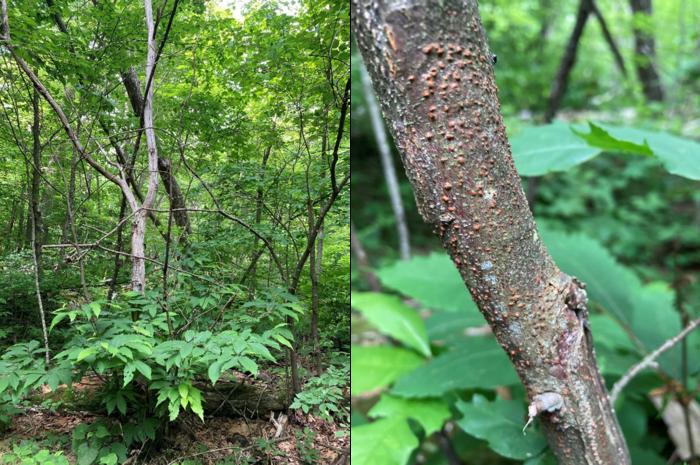Chestnut Blight Has Significantly Altered the Composition of Shenandoah National Park
Posted on Categories Discover Magazine

Nostalgia, mixed with a bit of curiosity, can lead to some important insights.
When Richard Karban, an ecology researcher at the University of California, Davis, decided to return to the forest he surveyed in 1977 — this time accompanied by his daughter Claire, a graduate student in ecology at the University of Colorado, Boulder — he expected to see little change. After all, when he first visited Whiteoak Canyon in Virginia’s Shenandoah National Park, he’d seen much the same tree composition that Lucy Braun described in her seminal book Deciduous Forests of Eastern North America, published in 1950. “At that time, my impression was that the forest hadn’t really changed that much,” Karban said.
Shocking Decline in American Chestnut Trees
In 2021, he was in for a shock. “We were quite surprised to see that since 1977, the forest had changed dramatically,” Karban says. Most of the mature chestnut trees had vanished — the victim of canker fungus, Cryphonectria parasitica. That fungus has accounted for the widespread loss of the American chestnut trees throughout the country.
Some white oaks, which were once “co-dominant” with the chestnut trees, had filled in some gasps. However, they were still less common than when he visited the forest in 1977, a fact he calls “concerning.” The results of his survey have been published in a PLOS ONE report.
“We would have thought that any kind of replacement of this sort would have occurred much more quickly,” says Karban. Instead, smaller trees like birch have filled in some of the gaps left behind by the chestnut trees.
They did find traces of chestnut trees — but in shrub form. The canker fungus lives on in the inner bark of fledgling trees and encircles the stem. But the roots live on.
Read More: We’ve Lost 35 Percent of Forests in the Past 300 Years
Causes of Slowed Growth in Whiteoak Canyon Forest
Karban isn’t sure why the forest has been slow to fill with larger trees. “There are a lot of other changes that have occurred between ‘77 and now that could very well be drivers of the changes in the forest composition that we observed,” Karban says. For instance, more deer live there now, and the forest has gone for a long time without a significant fire.
Other pests beyond the chestnut blight have entered the forest, too. The hemlock wooly adelgid, an aphid-like invasive species, “has been hammering” the hemlock population there, Karban says. And the emerald ash borer has also taken hold.
Karban says that since neither he nor his daughter are trained as foresters, they are not sure what the best strategy is to manage Whiteoak Canyon—never mind the rest of the Shenandoah National Park. He hopes that foresters will look at their report and consider some strategies to return the forest to its previous health.
Read More: How Do We Plant More Trees If There’s a Seed Shortage?
Article Sources
Our writers at Discovermagazine.com use peer-reviewed studies and high-quality sources for our articles, and our editors review for scientific accuracy and editorial standards. Review the sources used below for this article:
Before joining Discover Magazine, Paul spent over 20 years as a science journalist, specializing in U.S. life science policy and global scientific career issues. He began his career in newspapers, but switched to scientific magazines. His work has appeared in publications including Science News, Science, Nature, and Scientific American.